The inconsistencies and out-of-control fundamental problems of Turn, snow engraving, entrance of bag/rod, emergency stop, sharp turn, mushroom (mogul), wild snow, etc. are mostly during taxiing/rotation. There is a habit of counter rotation.
Counter rotation may not have a clear Chinese translation at present. It means that the upper body rotates in the opposite direction to the lower body in the process of rotation—that is, when the lower limb (snowboard) rotates clockwise, the upper body rotates by counterclockwise rotation. Lower limb movements.
Many people are not aware of the existence of this problem. In fact, the vast majority of single board skaters, regardless of level, have a certain degree of this problem.
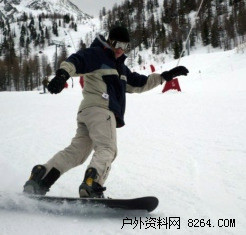
The figure above is an example of the toe side in an old tutorial. Note that there is a hind-leg motion on the back leg, which is the source of high-speed emergency stop loss. The toe movement accompanying the back squatting is also the culprit of the leg cramp.
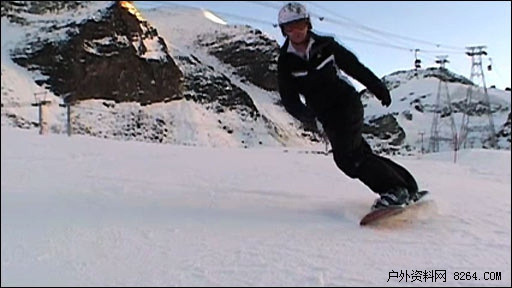
The shoulders and snowboards on the above figure are almost at an angle of 90 degrees.
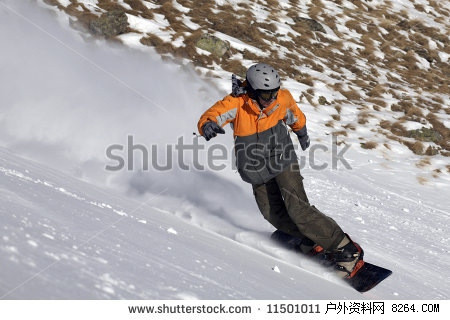
The above figure clearly borrows from the upper body counter rotation.
The solution is first of all to focus on gliding posture. Incorrect actions always result from irregular postures.
In the correct gliding posture, the connection between the shoulders, the connection line of the two metatarsals, the connection line of the knees always parallel and parallel to the snowboard. Hands spread naturally to both sides (and the line is parallel to the snowboard), and the palm of the hand is inward or backward. Look up, straighten your chest, straighten your waist, bend your knees naturally, point your knees in the same direction as your toes, and turn your head to see where you want to go. The center of gravity is in the middle of the two feet (accurately, a vertical line is drawn from the center of gravity of the body to the rolling surface of the slope. The vertical line on the slope point should be equal to the position of the feet.... Please call for a square. Hand ...), weight evenly distributed on both feet.
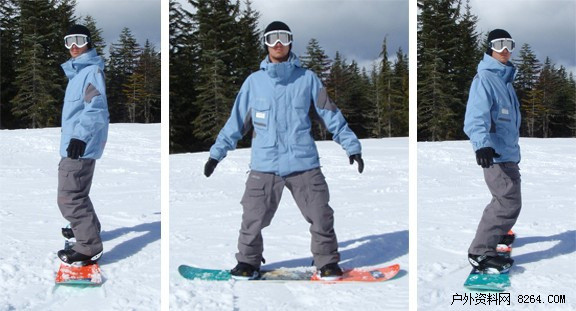
The palm of the figure above is inward. Individuals prefer the backward position of the palm. The reasons are written behind.
.
It is not difficult to maintain this position on the ground. In taxiing, especially high-speed taxiing, the following problems often occur:
When there is a certain slope, it is easy to focus on the back foot. Then pay attention to the same degree of curvature of the two knees, the body perpendicular to the slope and fall in the middle of the feet, straight back to tighten the back, the center of gravity will come back.
When there is a certain speed or body relaxation, the upper body is used to turning in the forward direction, so the shoulder line and the snowboard are at an angle. The effective method in teaching is to remind students to pay attention to the position of their hands. When the position of the hands is correct, the posture of the upper body can be easily adjusted. In addition, the orientation of the knee is the same as that of the toe, and the help of the upper body posture is also very helpful.
After the specification of the gliding posture, when turning, pay attention to use the gaze to guide the previous hand, and both hands rotate to naturally drive the shoulders, and then twist the waist and lumps, and transmit the movement trend to the knees through the lumbosacral to drive the snowboard. The upper body twists in the same direction as the snowboard twists.
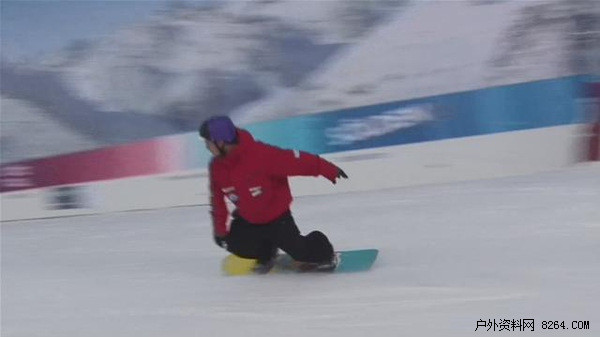
Pictured above is toeside carved snow, pay attention to the shoulders, the knees of the knees, and the curvature of the knees, the body fell in the middle of the snowboard and other details.
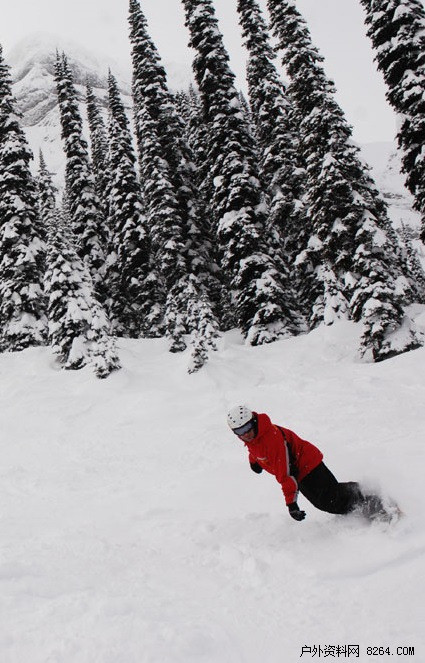
The picture above shows toe side turn. Note that the front hand has a little pressure shoulder action, this is in order to cooperate with the knee to reduce the inertia of pressure accumulated in the bottom of the board, while the center of gravity forward shift to reduce the pressure on the end of the board, and thus a more rapid turn. Because of the aggressiveness of the front-pressure swivel, I call it the attack position, which is one of the necessary skills for high-speed walking of mushrooms (mogul).
Two more effective exercises in the teaching process:
Imagine that each end of the board is tied with a rope. You spread out your arms and straighten the two ropes. (Tightening your back is like pulling a rope.) Imagine you are using both hands to pull a rope to control the rotation of the board. At this point, the back of the hands can be easily back to ensure the integrity of the above movement. Pay attention to the knees and ensure that the curvature of the knees is consistent.
Imagine that you are driving a small speedboat and pointing in the direction you want to go. (This exercise can be exaggerated in practice. The hand is open and the body is 90 degrees but not shoulders, parallel to the slope, and the hand is forced forward.) The back hand is open, the big arm and the small arm are in an obtuse angle at a large angle, and the back of the palm is used to control the rudder. I know that many people have never opened a speedboat, so I think again. Pay attention to the direction of your knees and make sure that your knees have the same curvature.
The fundamental purpose of Exercise 1 is to make the upper body a whole by tightening the back muscles, and to drive the spins through the waist. Exercise 2 focuses on the guiding function of the previous hand, driving the lumbosacral through the active rotation of the shoulders. These two exercises are suitable for a large number of repeated practice habits in a smooth greenway. This is the means of practice rather than the final request. In fact, skating under complex snow conditions requires physical relaxation.
After the standard of the gliding posture and correct movement of the body, attention is paid to the details of the lower extremities. In principle, the center of gravity is in the middle of the feet and the curvature of the knees remains the same. Through the up and down of the center of gravity (knees), the accumulative pressure at the bottom of the snowboard during the high-speed slip is reduced to achieve smoother, clearer movement. Specifically, it bends gradually when it is decelerating into the bend, reducing the pressure at the bottom edge of the board, avoiding the springboard, and reducing the resistance of the swing. Raise the center of gravity when accelerating the cornering and strengthen the blade pressure so that the blade can eat the snow.
Note that the above is about turning. High-speed snow carving is completely different. It is complicated to elaborate.
In the event of an awkward heel, the tiptoe can indeed achieve a more rapid change of posture and is a necessary means of action on the pole of the park, but it should be avoided during the glide. Under the premise of the fit of the shoes, the lower part of the calf should theoretically be taken as a whole, and the weight is transmitted to the snowboard through the back plate behind the holder and the front strap, and the ankle does not need active force. We can roughly describe the phenomenon of cramping the calf before the thigh, which is attributed to the excessive force of the ankle and the lack of active knee flexion.
In the actual taxiing process, the orientation of the upper body, the position of the hands, and the like will be different due to the technical style and the snow conditions of the skater. Such as the shoulders connecting the line is basically perpendicular to the direction of advancement, the two hands in front of the Japanese style carved. The connection between the shoulders is basically parallel to the direction of advancement, and the two hands are engraved on the sides of the body. And most of the more casual, action-oriented, personal style gliding techniques. But its roots are consistent with the steering of the upper body and lower limbs. Counter rotation occasionally acts as a special response to special situations, but it is by no means the norm of taxiing.
NINGBO HAIFU PLASTIC APPLIANCE CO.,LTD , https://www.hifel.com